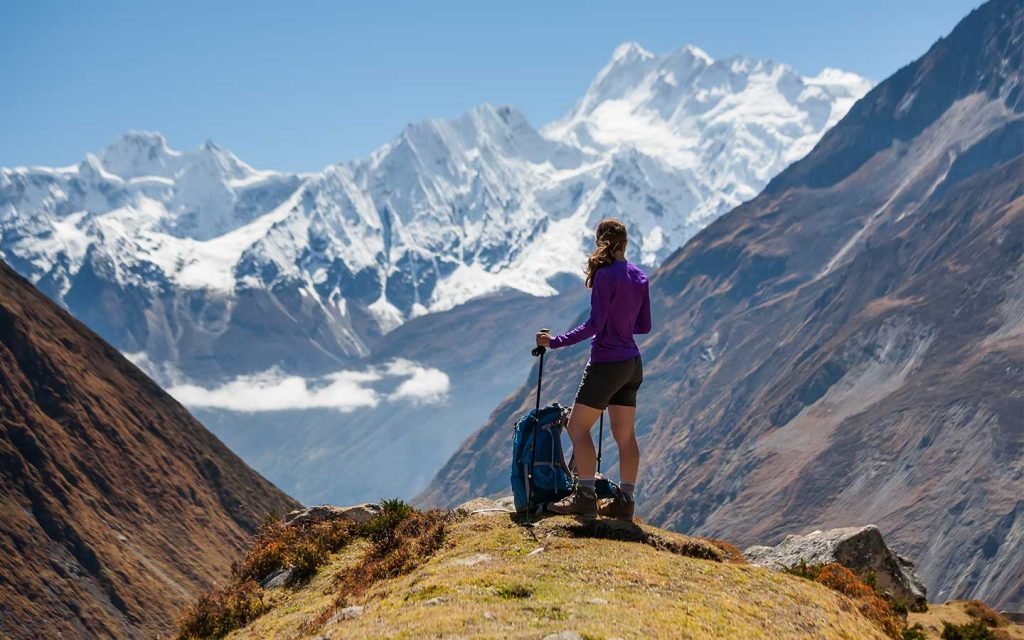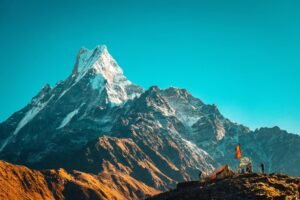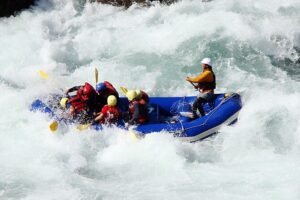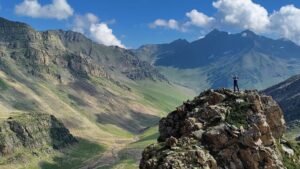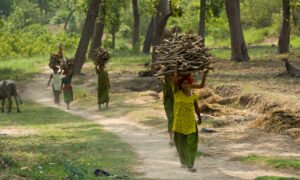The Himalayas, known for their towering peaks, serene valleys, and rich cultural tapestry, have long been a magnet for adventurers, spiritual seekers, and nature lovers. Spanning five countries—Bhutan, India, Nepal, China, and Pakistan—this majestic mountain range offers an array of experiences that can cater to various interests and budgets. For those looking to explore the Himalayas without breaking the bank, there are numerous strategies to maximize the experience while minimizing costs. This article delves into practical tips, budget-friendly destinations, and essential advice for an unforgettable yet economical Himalayan adventure.
Planning Your Trip
Research and Itinerary
Before embarking on your journey, thorough research is crucial. Identify the regions you want to explore and the activities that interest you. Popular destinations include:
- Nepal: Home to iconic peaks like Everest and Annapurna, as well as vibrant cultural heritage sites.
- India: Regions like Himachal Pradesh, Uttarakhand, and Sikkim offer a blend of natural beauty and cultural richness.
- Bhutan: Known for its unique approach to tourism, emphasizing sustainability and cultural preservation.
- Pakistan: Offers breathtaking landscapes in regions like Gilgit-Baltistan, though it requires careful planning regarding safety and accessibility.
- Tibet (China): Renowned for its spiritual heritage and stunning landscapes, but it requires special permits and guided tours.
Creating a flexible itinerary that allows for changes can help you adapt to unexpected opportunities or challenges, ensuring you make the most of your trip.
Budgeting
A well-planned budget is essential for a cost-effective trip. Consider the following expenses:
- Accommodation: Opt for budget hostels, guesthouses, or homestays.
- Food: Enjoy local cuisine, which is often cheaper and more authentic than international dishes.
- Transport: Use local buses, shared taxis, or trains instead of private cars or flights.
- Permits and Fees: Research any trekking permits, visa fees, or entry charges for national parks and heritage sites.
- Gear: Invest in essential gear only, and consider renting or buying second-hand items.
Allocating a daily budget for accommodation, food, and activities can help you manage your finances effectively.
Budget-Friendly Destinations and Activities
Nepal
Trekking in the Annapurna Region
The Annapurna Circuit and Annapurna Base Camp treks are popular and affordable options. With numerous teahouses along the routes, you can find budget accommodation and food easily. The Annapurna Conservation Area Permit (ACAP) and the Trekkers’ Information Management System (TIMS) card are required but relatively inexpensive.
Exploring Kathmandu
Kathmandu, Nepal’s capital, offers a mix of historical sites, bustling markets, and cultural experiences. Budget accommodations in the Thamel district, street food, and inexpensive entry fees to sites like Swayambhunath (Monkey Temple) and Pashupatinath Temple make it an affordable destination.
Chitwan National Park
For wildlife enthusiasts, Chitwan National Park offers budget-friendly jungle safaris. Affordable lodges and guesthouses are available in Sauraha, the park’s gateway.
India
Dharamshala and McLeod Ganj
Nestled in Himachal Pradesh, these towns are known for their Tibetan culture and stunning mountain views. Budget accommodations, local eateries, and free or low-cost activities like hiking to Triund make it a perfect destination for budget travelers.
Rishikesh
Known as the yoga capital of the world, Rishikesh offers numerous ashrams and yoga retreats at various price points. Affordable guesthouses, vegetarian cafes, and activities like river rafting on the Ganges make it a budget-friendly spot.
Sikkim
Sikkim offers a serene and less commercialized Himalayan experience. Gangtok, the capital, has budget accommodations and restaurants. Treks like the Goecha La are cost-effective compared to more popular routes in Nepal.
Bhutan
Thimphu and Paro
While Bhutan is generally more expensive due to its tourism policy, budget travelers can still find affordable accommodations and local eateries in Thimphu and Paro. The daily tariff includes meals, transport, and guides, which can be cost-effective if planned well.
Pakistan
Hunza Valley
Hunza Valley is known for its breathtaking landscapes and hospitable people. Budget accommodations, local food, and trekking opportunities like the trek to Rakaposhi Base Camp make it a great destination for budget-conscious travelers.
Tibet (China)
Lhasa
Although traveling to Tibet requires permits and guided tours, budget travelers can minimize costs by joining group tours. In Lhasa, budget accommodations and affordable local food are available, and sites like Potala Palace and Jokhang Temple are must-visit spots.
Travel Tips and Strategies
Accommodation
Hostels and Guesthouses
Hostels and guesthouses are widely available in popular Himalayan destinations. Websites like Hostelworld and Booking.com can help you find affordable options. In many areas, local guesthouses offer comfortable stays at reasonable prices.
Homestays
Homestays provide an opportunity to experience local culture and hospitality. They are often cheaper than hotels and include meals. Websites like Airbnb and Homestay.com can help you find options.
Camping
For trekking enthusiasts, camping is a cost-effective option. While it requires some initial investment in gear, it allows you to stay in remote areas without the cost of accommodation. Check local regulations and ensure you have the necessary permits.
Food and Drink
Eat Local
Eating local cuisine is cheaper and provides a more authentic experience. Street food, local markets, and small eateries offer affordable and delicious meals. In Nepal, try momos and dal bhat; in India, enjoy thalis and samosas.
Self-Catering
Buying groceries and cooking your meals can save money, especially in areas with higher food prices. Many guesthouses and hostels provide kitchen facilities for guests.
Water Purification
Avoid the cost of bottled water by carrying a reusable water bottle and a water purification method, such as a filter or purification tablets. This not only saves money but also reduces plastic waste.
Transportation
Public Transport
Using public transport is one of the most effective ways to save money. Local buses, shared taxis, and trains are significantly cheaper than private cars or flights. In India and Nepal, extensive bus networks connect major towns and trekking hubs.
Walking and Cycling
For short distances, walking or cycling can be an enjoyable and cost-free way to explore. Some towns and trekking areas are best experienced on foot or by bike.
Ride-Sharing
Ride-sharing apps and local ride-sharing communities can help reduce transport costs. In some areas, you can join other travelers to share the cost of taxis or rental cars.
Permits and Entry Fees
Research and Plan
Research the necessary permits and entry fees for your destinations and activities. In Nepal, for example, certain trekking routes require TIMS cards and conservation area permits. Planning ahead ensures you have the necessary documents and avoids unexpected expenses.
Group Discounts
Traveling in a group can reduce the cost of permits and guided tours. Many agencies offer group discounts, making it more affordable to explore with friends or join organized groups.
Gear and Equipment
Renting vs. Buying
For short trips, renting gear can be more cost-effective than buying. Many trekking hubs offer rental services for equipment like sleeping bags, trekking poles, and jackets. For longer trips, investing in quality gear may be worthwhile, especially if you plan to use it frequently.
Second-Hand Gear
Consider buying second-hand gear from online marketplaces or local shops. This can significantly reduce costs while still providing the necessary equipment for your adventure.
Essential Advice for Budget Travelers
Safety and Health
Travel Insurance
Investing in travel insurance is crucial, even for budget travelers. It provides coverage for medical emergencies, trip cancellations, and lost belongings. Ensure your policy covers adventure activities like trekking and mountaineering.
Vaccinations and Medications
Check the recommended vaccinations for your destination and ensure you are up to date. Carry a basic first aid kit and any necessary medications, as medical facilities may be limited in remote areas.
Acclimatization
Altitude sickness is a common concern in the Himalayas. Plan your itinerary to include rest days for acclimatization, especially if you are trekking at high altitudes. Hydrate well, ascend gradually, and be aware of the symptoms of altitude sickness.
Respecting Local Culture
Learn Basic Phrases
Learning a few basic phrases in the local language can go a long way in building rapport with locals. Simple greetings and polite expressions show respect and appreciation for the local culture.
Dress Appropriately
Dress modestly, especially in rural areas and religious sites. Long sleeves and pants are often preferred. Carry a scarf or shawl to cover your head when visiting temples or monasteries.
Environmental Responsibility
The Himalayas are a fragile environment, and it’s essential to minimize your impact. Follow the Leave No Trace principles, avoid using single-use plastics, and dispose of waste responsibly. Support eco-friendly accommodations and tour operators.
Interacting with Locals
Support Local Businesses
Choose locally-owned accommodations, restaurants, and shops to support the local economy. Engaging with local guides and porters not only enhances your experience but also provides valuable employment opportunities for the community.
Be Respectful
Respect local customs and traditions. Ask for permission before taking photographs of people or religious sites, and avoid disruptive behavior. A respectful attitude fosters positive interactions and enriches your travel experience.
Sample Itineraries
1. Nepal: Annapurna Circuit Trek (21 Days)
Day 1-2: Arrival in Kathmandu. Explore Thamel, visit Swayambhunath and Pashupatinath.
Day 3: Travel to Besisahar by bus.
Day 4-18: Trek the Annapurna Circuit. Overnight stays in teahouses. Key stops: Manang (acclimatization day), Thorong La Pass, Muktinath.
Day 19: Travel to Pokhara by bus. Relax by Phewa Lake.
Day 20: Return to Kathmandu by bus.
Day 21: Departure.
2. India: Rishikesh and Himachal Pradesh (14 Days)
Day 1: Arrival in Delhi. Overnight stay.
Day 2: Travel to Rishikesh by bus/train.
Day 3-5: Explore Rishikesh. Attend yoga classes, visit ashrams, and enjoy river rafting.
Day 6: Travel to Dharamshala by overnight bus.
Day 7-9: Explore McLeod Ganj. Visit the Dalai Lama Temple, hike to Triund, and explore local markets.
Day 10: Travel to Manali by bus.
Day 11-13: Explore Manali. Visit Old Manali, Solang Valley, and nearby villages.
Day 14: Return to Delhi by bus. Departure.
3. Bhutan: Thimphu and Paro (7 Days)
Day 1: Arrival in Paro. Travel to Thimphu.
Day 2-3: Explore Thimphu. Visit Tashichho Dzong, National Memorial Chorten, and local markets.
Day 4: Travel to Paro. Visit Paro Dzong and National Museum.
Day 5: Hike to Tiger’s Nest Monastery.
Day 6: Explore Paro. Visit Kyichu Lhakhang and local shops.
Day 7: Departure.
Exploring the Himalayas on a budget is not only possible but also immensely rewarding. With careful planning, a flexible itinerary, and an open mind, you can experience the breathtaking beauty, rich culture, and spiritual heritage of this magnificent region without spending a fortune. From trekking in Nepal to experiencing the spiritual ambiance of Rishikesh, the Himalayas offer countless opportunities for budget travelers to embark on the adventure of a lifetime. By respecting local customs, supporting sustainable tourism, and embracing the simplicity of life in the mountains, you can create lasting memories while contributing positively to the communities you visit.

